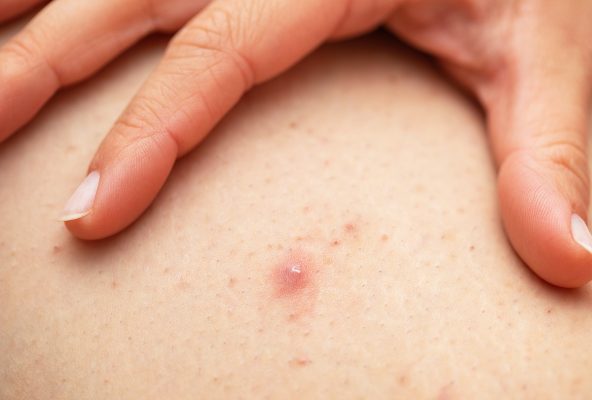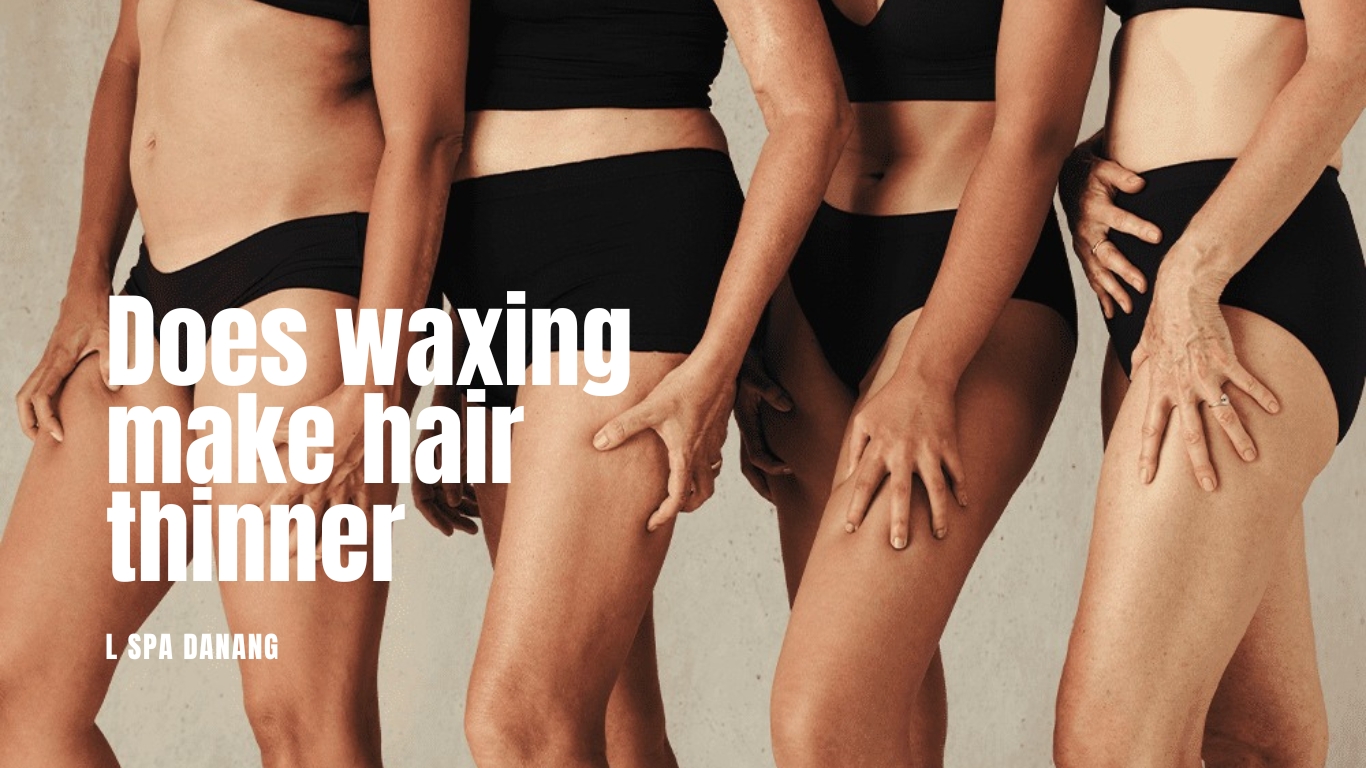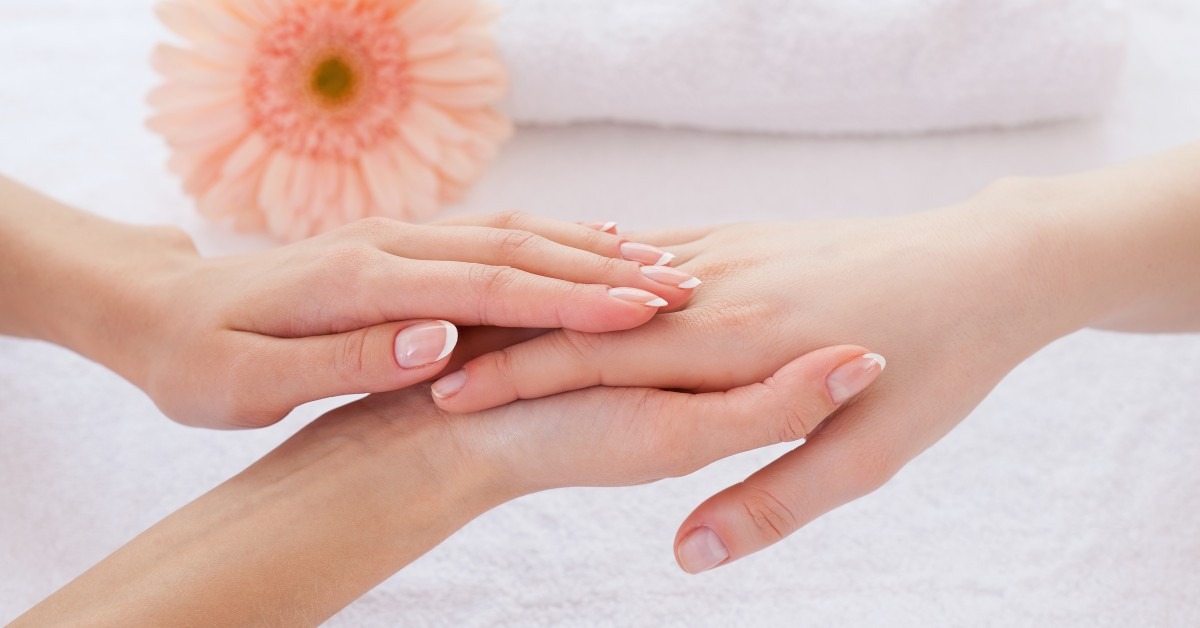The internet is abuzz with discussions about folliculitis after waxing treatments and its various causes. Some refer to it as a histamine reaction, others as ingrown hairs, razor burn, or bumps after a Brazilian wax. Regardless of the terminology, the consensus is that the symptoms manifest as a form of folliculitis. In this article, we’ll delve into what folliculitis after waxing, explore preventive measures for estheticians, and discuss potential treatments to alleviate symptoms.

What Is Folliculitis?
Folliculitis is a skin condition characterized by inflammation of the hair follicles within the skin. This can result from various factors, with bacterial infection being the most common culprit.
Symptoms of folliculitis encompass itchiness, soreness, and the development of pimples or small red bumps around areas with hair growth. Typically, this condition resolves on its own within a few days without leaving any lasting scars. However, in certain instances, the infection may escalate, causing sores, scarring, or, in severe cases, hair loss.
What Causes Folliculitis?
Folliculitis can arise from various causes or risk factors, and some of the most prevalent and preventable ones include:
- Clothing: Wearing non-breathable or abrasive clothing that causes constant rubbing can trap heat or sweat, potentially leading to a rash.
- Standing water: Soaking in a poorly maintained hot tub or public pool can contribute to the development of these types of rashes.
- Hair removal: Folliculitis may occur after shaving, waxing, or other hair removal methods that irritate the skin or damage hair follicles.
Being aware of your risk factors and making informed lifestyle choices is crucial for preventing folliculitis.
Symptoms Of Folliculitis
Folliculitis can manifest with various symptoms, including:
- Pimples or red bumps around hair follicles or areas of hair growth
- Pus-filled pimples or blisters
- Itching or burning
- Tender, sensitive, or painful skin
- Crusting
If your symptoms persist or worsen despite self-care measures over a week or two, it is advisable to consult a doctor. They may prescribe antibiotics or antifungal medications to address the symptoms. If you observe the infection spreading, seek medical attention promptly.
What Is Folliculitis After Waxing?

Folliculitis after waxing can occur due to the removal of hair at the root, leading to a bumpy, red rash resembling pimples caused by inflammation. Typically, this reaction resolves on its own within a few days. If it evolves into white or fluid-filled bumps after some days, it may suggest an infection, which can still be addressed with home remedies.
After the initial rash subsides, there’s a possibility of developing ingrown hairs. These are characterized by round bumps or pustules resembling breakouts or pimples, with or without visible hair beneath, depending on your skin type. While ingrown hairs can be uncomfortable and aesthetically displeasing, they are treatable with various at-home products and are preventable.
How Long Does Folliculitis Last After Waxing?
Folliculitis after waxing is typically a temporary concern. In mild to moderate cases, it often resolves on its own within a few days, even without treatment. To minimize the risk of scarring, it’s advisable to avoid tight clothing, refrain from squeezing the affected area repeatedly, and steer clear of applying chemical products to the skin. Following these precautions can contribute to a quicker and smoother recovery process.
How To Prevent Folliculitis After Waxing?
As previously mentioned, many types of folliculitis can be effectively prevented, irrespective of their causes. Specifically, for individuals concerned about developing this condition after waxing, several preventive measures can be taken to ensure folliculitis is avoided.
Some of these prevention strategies include opting for loose and breathable clothing during and after your waxing session to prevent the accumulation of sweat or heat, which can lead to bacterial growth.
Keeping your skin clean is of utmost importance in maintaining clear skin, especially before and after your waxing appointment. Regular cleansing helps prevent the onset of folliculitis.
How To Treat Folliculitis After Waxing?
If you’re experiencing symptoms of folliculitis after waxing, there are various effective treatment methods:
- Warm Compress for Ingrown Hairs:
Use a warm compress or heating pad on the affected area for approximately 5 minutes. This helps draw out ingrown hairs gradually.
- Cold Compress for Irritation:
If the issue is more related to irritation or inflammation, apply a cold compress to the affected area for up to 20 minutes to soothe the skin.
Consistent application of these compress techniques can aid in alleviating symptoms and promoting a smoother recovery.
A crucial point to bear in mind regarding folliculitis and its symptoms is to refrain from picking, popping, or exacerbating the rash or bumps. Engaging in such actions not only elevates the likelihood of more bacteria entering your skin but also raises the risk of infection or scarring. While you might believe that popping these bumps could be beneficial, it could potentially harm your skin or lead to increased bacterial accumulation and ingrown hair cysts. It’s best to allow the natural healing process to take its course.
When to Seek Medical Attention?

While folliculitis often resolves on its own and can be treated at home, there are instances when self-care measures are insufficient, and professional medical attention becomes necessary. If you experience the following situations, it is advisable to consult a medical professional promptly:
- Severe Symptoms:
If you observe an escalation in symptoms despite utilizing over-the-counter products and warm compresses during the initial stages of folliculitis, it is crucial to consult a doctor promptly. Assess the severity by monitoring the spread of folliculitis and the level of discomfort it induces.
Medical professionals, particularly dermatologists, conduct a thorough examination of your skin condition to provide tailored treatment based on your specific needs. Seeking timely medical intervention ensures appropriate care and management of severe folliculitis.
- Recurrent or Persistent Folliculitis:
Folliculitis may exhibit a pattern of recurrence, with diminishing intervals between episodes leading to chronic folliculitis over time. If you perceive a repetitive occurrence of folliculitis, seeking assistance from a dermatologist is advisable.
Consulting a dermatologist allows the professional to identify the precise cause behind the recurrent episodes and implement targeted treatment strategies. For instance, persistent folliculitis may be linked to being a carrier of staphylococcus aureus, a condition that requires confirmation and specialized care by a dermatologist.
- Signs of Infection:
If you observe a worsening trend in the signs of infection, it is crucial to seek professional assistance rather than relying on home remedies.
For instance, if the size of the bumps is progressively increasing or if you experience heightened pain throughout the day, it signifies a worsening condition that requires proper medical attention. Additionally, the presence of pus-filled bumps indicates a follicular infection, emphasizing the need for prompt treatment to address the infection effectively.
FAQs
Will exfoliating help folliculitis?
When addressing folliculitis on the buttocks, it’s important to avoid certain practices. Specifically, refrain from excessive or harsh scrubbing and exfoliation. Overdoing exfoliation can exacerbate the condition. Additionally, avoid popping pimples or dealing with clogged follicles aggressively. After a workout, opt for fresh clothing to prevent further irritation.
Should I stop waxing if I get folliculitis?
If you find relief from applying a warm compress, feel free to use it more than four times a day. However, when your folliculitis is a result of shaving, plucking, or waxing, it is advisable to refrain from these activities for at least 30 days. This break can contribute to the healing process and prevent further irritation.
Should I put moisturizer on folliculitis?
In mild cases of folliculitis, which typically resolves within 7-10 days without treatment, the use of a moisturizer containing an antibacterial agent may be beneficial. This can assist in soothing the affected area and promoting healing.
This article is for informative reference and to explain the prevention of and how to treat Folliculitis After Waxing. To learn more about our available treatments and services, please visit the L Spa Da Nang website.





